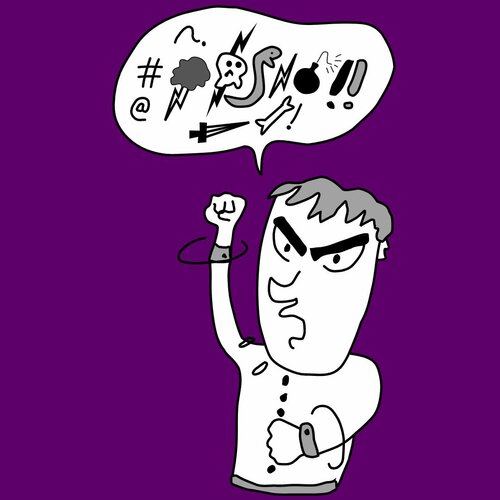by Carolyn Edlund
Negative feedback can be frustrating and distressing. Resist the urge to escalate into a battle and use these techniques to calm the storm.

If you’ve logged into your website, social media profile, forum or other online space where art is shared or discussed, you may run into a troll. These are people who post negative and inflammatory comments for the sole purpose of antagonizing others and stirring up controversy. They can be quite a nuisance, but you don’t have to let them get you down. If you encounter a troll aiming their vitriol at you, simply . . .
Don’t Respond
Engaging with trolls can amp up discussions into screaming fights. This type of reaction gives them exactly what they wanted in the first place—an outraged victim to toy with. The simplest thing to do is delete their comment and block them, if you have the ability to do so. This is easy on social media platforms where trolls are a well-known menace. In a group which you don’t manage, you can reach out to the admin to report the troll and get them removed and banned.
Keep in mind that you will never change a troll’s mind by defending yourself or your work. A non-engagement policy, no matter how offended you feel, is best. Trolls are looking for angry reactions; silence defuses them and is the most effective way to make their comments appear petty and worthless.
If you have a blog on your artist website, make sure your settings dictate that comments be reviewed and approved first. This give you total power to simply delete any that cross the line or were intended to insult you. Meanwhile, you can also get rid of spam comments that may have made their way through the filter.
Trolls are universally hated. If one posts a hostile comment in a online discussion, even if it’s not directed at you, resist the impulse to call them a jerk. They thrive on public fistfights in discussion groups, but that makes the experience worse for all members. Admins must be vigilant to remove these offenders; help them by ignoring and flagging the comment. Focus your time on contributing to positive conversations.
If you receive negative or accusatory emails in your inbox, relegate them also to the dustbin. Mark them as spam and click “block” on the sender’s name to prevent further messages. You can also report spam to your email provider. When you consider how much time the troll wasted trying to bait you, while you disposed of them in three seconds, you can see that you come out ahead, every time.
Dealing with Rejection Letters
Another type of criticism which can hurt is getting a rejection letter. This may be from a gallery, an exhibition, a residency, grant or other opportunity. Although it’s quite rare to receive a rude response from anyone in the industry who has to turn down artists, it isn’t unusual for artists to feel insulted. This is due to taking the rejection personally, and perhaps reading negativity into the message that really isn’t there.
All experienced artists have been rejected at some point, and most can recall many occasions. It’s a byproduct of putting yourself out there and applying. There is nothing wrong with this; in fact, it’s a sign that you have taken your art business to a higher level and are reaching for aspirational goals. You’ll be rejected when your artwork or experience is not a suitable match, or there is a large group of applicants, most of whom will be turned down.
If you get a rejection letter, consider asking for feedback as to the reason why and how you can improve. Many times you will receive criticism which explains why you were not chosen, and this gives you a chance to see how others view your artwork. If you can benefit from their explanation and suggestions, do so. If you feel that criticism is overly harsh, take it with a grain of salt. This is an individual opinion, not the final say. Seek out critique from art instructors, curators or others you respect to get multiple opinions and a more balanced view if you are looking to improve your art.
In Person Comments
An artist in her booth at a festival watched two women walking nearby. One asked, “Do you want to look here?” to which the other replied, “No, I have enough junk.” Not very flattering, but it was obviously a careless thought instead of a direct insult. Screen this type of comment out. It has nothing to do with you.
Other times when comments are negative, it’s because the viewer may not understand or appreciate your art. That’s just part of business. Try not to take it personally—just smile and let it go. If your work is highly unusual or controversial you’ve undoubtedly become used to hearing from people who don’t get what you do, or feel differently about a cause you support. Many artists deliberately create provocative work. If you do, try to steer reactions to civil conversation instead of discord.
Step back emotionally from overly critical comments, and you will find it easier to avoid your own angry reaction. Remember that critics don’t define you and they don’t define your art. They may speak without thinking or perhaps they’re overly direct and rude. It’s best to forgive them, and simply move on. Other people will love what you do and offer compliments. When your artwork gets reactions, it means that it’s making impact!

Speak Your Mind